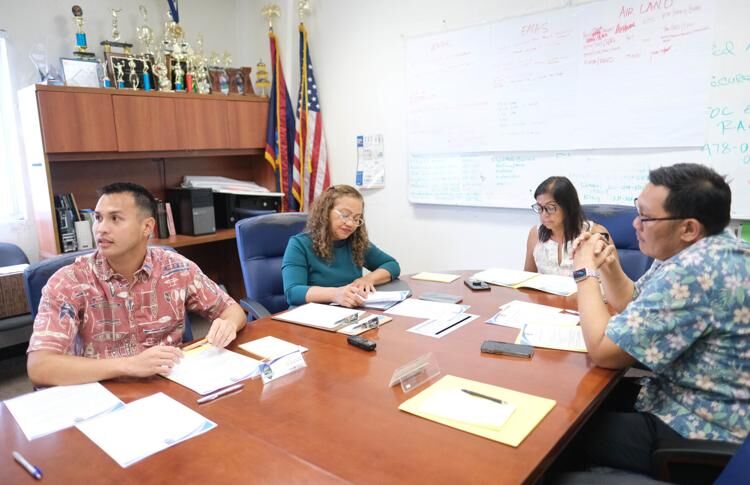HAGÅTÑA (The Guam Daily Post) — The Guam Environmental Protection Agency may seek the ability to cut off the water supply to residents who violate septic tank and leaching field regulations.
Increased enforcement ability is part of a two-pronged approach at Guam EPA to deal with rising groundwater contamination on the island, according to agency Water Division director Capt. Brian Bearden.
In an effort to keep the island’s northern lens aquifer clean, Guam law bans the installation of septic systems in areas less than half an acre in size over the Groundwater Protection Zone in the northern part of the island. An exemption to that rule is allowed if a parent splits up the property to pass it on to children, but that rule is being misused for commercial gain, according to Guam EPA.
A recommendation presented to the agency’s board at a meeting stated that “Guam EPA recognizes systemic abuse in the parental subdivision policy where a provision that was intended to benefit the families of residents is now being used to bypass important aquifer protections for the purpose of developing more, smaller lots for eventual resale.”
The agency stated the practice “poses significant threats to our aquifer through increased loading of wastewater pollutants including but not limited to pathogenic microorganisms, nitrate and organic chemicals from household uses including cleaning products and pharmaceuticals.”
A change in the law is needed to allow GEPA to cut utilities to those who violate sewage disposal regulations along with “administrative, civil and criminal penalties.” The law already carries a penalty of $1,000 for violators.
Nitrate levels ‘rising’
Bearden had to leave Thursday’s meeting early, prompting agency board members to hold off further discussion about possibly seeking increased penalties.
But Bearden did speak about the other end of Guam EPA’s plans to combat groundwater contamination, which include permitting newer, more advanced alternatives to sewer lines or septic tanks.
“The purpose for that is to try to limit the degradation of groundwater in terms of nitrate, … the chemical we’re seeing … that is rising in the groundwater,” said Bearden.
Nitrate levels in the Adacao area of Mangilao were past half of the allowable limit laid out in the Safe Drinking Water Act, Bearden said, prompting a need for more intense scrutiny from the Guam Waterworks Authority.
Guam’s 36-year-old Toilet Facilities and Sewage Disposal Act essentially allows only three types of toilet systems, Bearden said: Those that connect to a sewer line; those that connect to a septic system; and those that empty into essentially a hole in the ground. The third option is restricted in almost every case and not really an option, he said.
He said the regulations cut out other options, such as allowing residents to install advanced nitrogen-reducing systems that use a pump system and bacteria to treat wastewater in a small, contained unit that can be attached to an underground tank. The systems can reduce nitrogen runoff by as much as 50%, and could be a viable alternative to traditional septic systems, which leach wastewater slowly into the surrounding groundwater.
Advanced nitrogen-reducing systems will require regular maintenance, and Bearden said that Guam EPA is also recommending that users be required to obtain an operating permit every year to ensure regular servicing. He said that solution is used around the country.
A lower-tech alternative would be to let residents install holding tanks – waterproof containers that hold wastewater and have to be drained as often as every few weeks. Though not always ideal, Bearden said that option could work for people who have no other alternatives.
“It’s a very expensive type of system to run because having a haul truck come out (to) pick up your sewage and haul it off to the sewer system is, I think, … in the hundreds of dollars per trip, typically. It’s not a very desirable solution,” Bearden told the board.
Board members didn’t act on any of the recommendations as of Thursday.

Steven Carbullido, Guam Environmental Protection Agency board chairman, left, convenes a meeting of the board of directors at the agency’s conference room in Tiyan on Thursday, Aug. 17, 2023.











